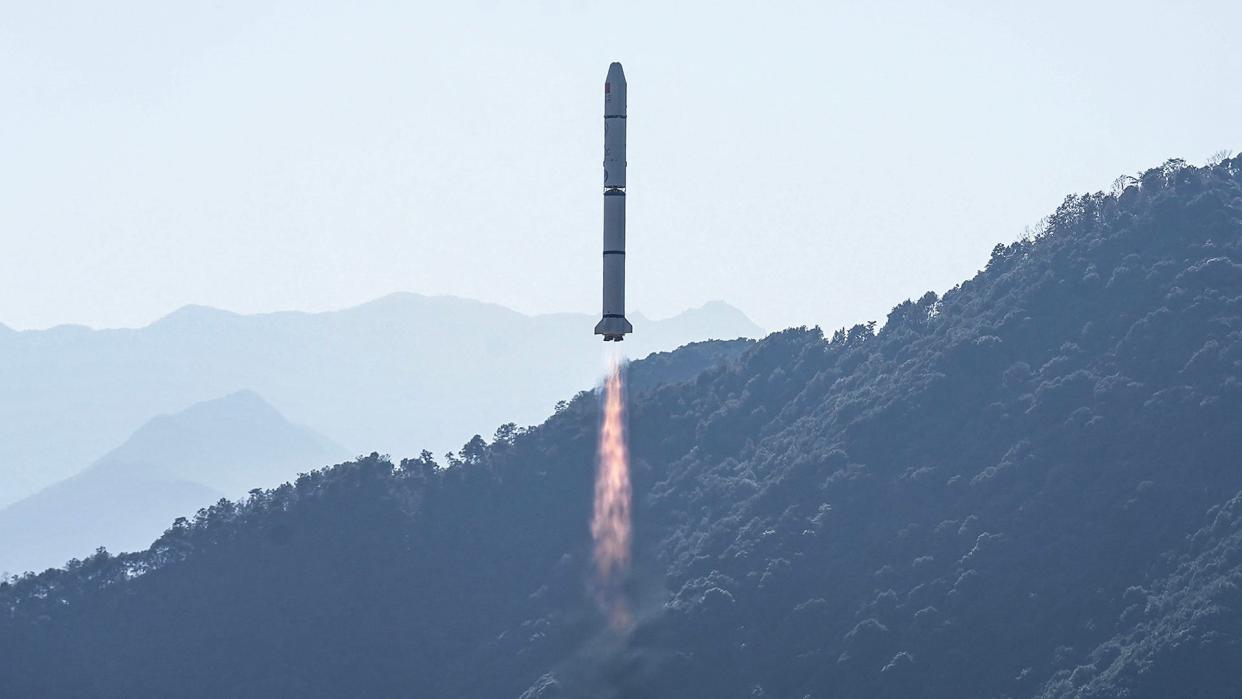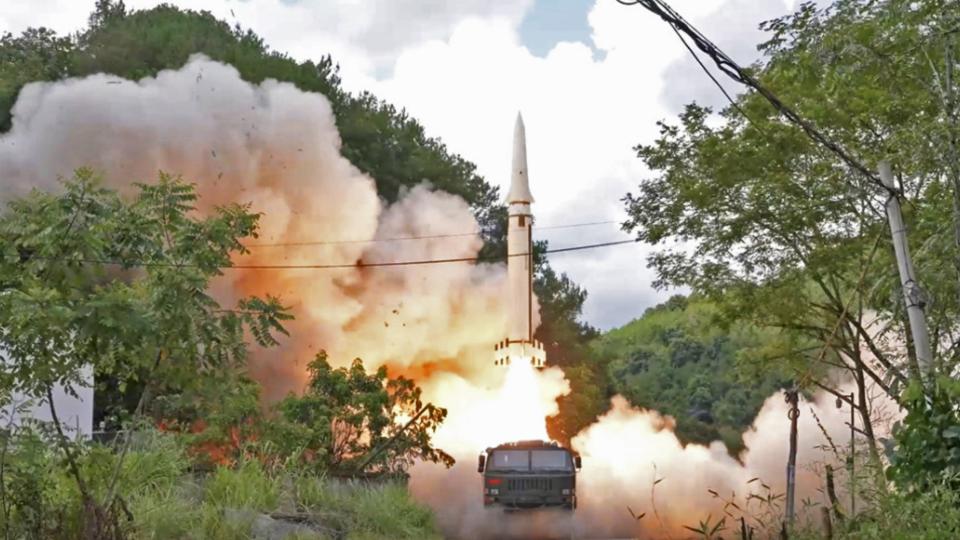Chinese Rocket Launch Rattles Taiwan

Taiwan’s Ministry of National Defense (MND) apologized to an already jittery populace for sending out an air raid alert stating a Chinese missile was passing over the island Tuesday. The object was actually a rocket launch for a satellite, but due to an improper translation, the English version of the alert misidentified it.
The alert, three days ahead of a pivotal presidential and parliamentary election, came as China is increasing balloon flights over the island. It raised additional concerns that Beijing was trying to exert influence over an island it considers a breakaway province it threatens to retake by force.
The incident took place shortly after 3 p.m. local time after an unannounced satellite launch by China.
“The trajectory unexpectedly flew over and went exoatmospheric when the vehicle was above Taiwan’s southern airspace,” the MND said in a tweet. “The air raid alert system was activated in the form of text messages to inform the public. The default English message was not revised and therefore incorrectly stated the launch vehicle as ‘missile.’ The MND extends an apology for any confusion this may have caused.”
After the launch, China’s official Xinhua news agency said a satellite named Einstein Probe (EP) was sent into space by a Long March-2C carrier rocket at 3:03 p.m. local time from the Xichang Satellite Launch Center in southwest China's Sichuan Province.
The misidentified Taiwanese alert raised anew concerns that Beijing was seeking to exert undue influence over the island nation of 23 million.
Taiwanese Foreign Minister Joseph Wu was giving a press conference to dozens of foreign reporters Tuesday as the shrill alert sounded on mobile phones in the room, Reuters reported. He described the launch as part of a pattern of harassment towards Taiwan, like the recent cases of Chinese balloons spotted over the island.
"All these kinds of tactics are classified as grey-zone activities, (and) continue to remind the people here in Taiwan that there is a danger of war between Taiwan and China," he told reporters. "With these kinds of threats against Taiwan I think we should be clear-eyed, we should not be provoked."
It is worth noting that Chinese ballistic missiles, which can have similar flight profiles as space launch rockets, at least early on, are a top threat to Taiwan and allied interests throughout the entire region and could rain down on targets during the opening stages of a conflict.
As we reported yesterday, China appears to be ratcheting up the scale of its balloon flights in the skies over Taiwan.
For the past month, the MND has reported instances of Chinese balloons flying over the highly strategic Taiwan Strait. They were initially sporadic flights and remained off the coast. However, there has been a recent surge in activity, with balloons now passing over Taiwan itself.
The MND said it detected three Chinese balloons over the Taiwan Strait on Sunday and claimed all three flew over the so-called Median Line in the Strait, with one reported to have crossed the southernmost tip of the island. That followed a situation Saturday when the MND announced two Chinese balloons had been detected in the previous 24 hours, with one briefly flying over the northern-most tip of Taiwan.
You can see those warnings from the MND below.
The Median Line serves as a de-facto boundary between Taiwan and the mainland. While crossing the median line is not an uncommon occurrence, as we have discussed in the past, the regularity of such flights, mainly by crewed aircraft and drones, continues to cause concerns. Beijing does not acknowledge the existence of the Median Line.
The increase in balloon flyovers comes as the People’s Liberation Army (PLA) aircraft have dramatically increased the number of flights over the past two years into Taiwan’s self-created Air Defense Identification Zone (ADIZ). That’s a large swath of airspace that covers the island and reaches far into the mainland. There were 110 such sorties in November 2023, a more than four-fold increase from July 2021, according to figures reported by NPR.
PLA aircraft and warships in the Taiwan Strait, and increasingly around the island itself serve as a near-continuous reminder of the scale of the threat that the island faces were Beijing to launch a military operation against it. So too have short-range ballistic missile launches over the island.

In the air, these activities have ranged from large-scale maneuvers by PLA aircraft around Taiwan, including training drills with the live firing of missiles and other weapons and even a virtual blockade, down to incursions by small drones over Taiwan’s outlying islands, some of which have been shot down.
All this has caused tensions to mount, with the false alert becoming a campaign issue on Tuesday.
Taiwan outgoing President Tsai Ing-wen was at a campaign event for her Democratic People's Party (DPP) in the southern city of Kaohsiung. She looked at a mobile phone and said "this is a satellite, not a missile - don't worry," Reuters reported, citing the official Central News Agency.
Taiwan's main opposition Kuomintang Party (KMT) criticized the alert, saying it had misled the public.
Whether this false alarm plays a role in Saturday's election that pits the independence-minded DPP against the more reconciliatory KMT remains to be seen.
Contact the author: howard@thewarzone.com

